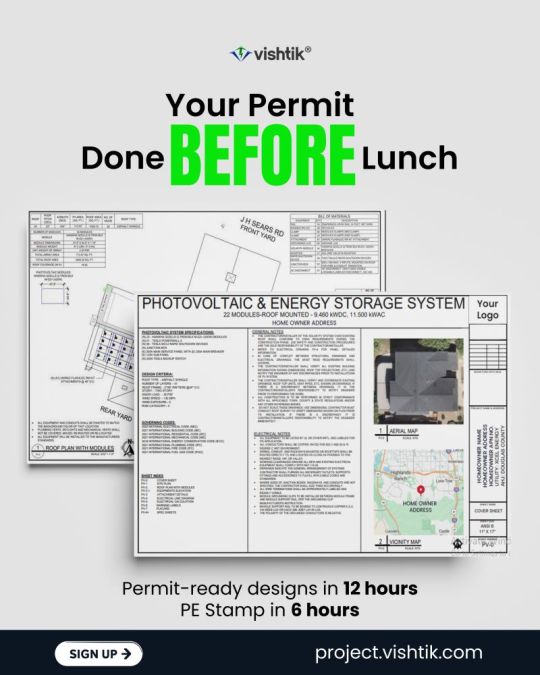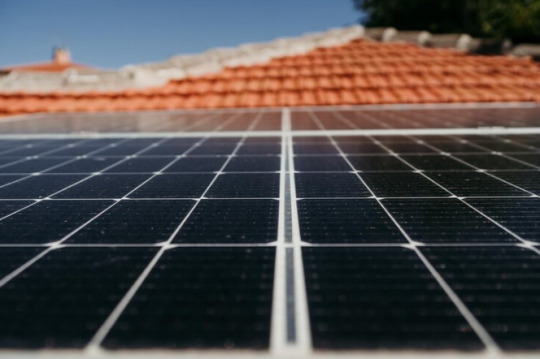#cleantech
Explore tagged Tumblr posts
Text
Cars bricked by bankrupt EV company will stay bricked

On OCTOBER 23 at 7PM, I'll be in DECATUR, presenting my novel THE BEZZLE at EAGLE EYE BOOKS.

There are few phrases in the modern lexicon more accursed than "software-based car," and yet, this is how the failed EV maker Fisker billed its products, which retailed for $40-70k in the few short years before the company collapsed, shut down its servers, and degraded all those "software-based cars":
https://insideevs.com/news/723669/fisker-inc-bankruptcy-chapter-11-official/
Fisker billed itself as a "capital light" manufacturer, meaning that it didn't particularly make anything – rather, it "designed" cars that other companies built, allowing Fisker to focus on "experience," which is where the "software-based car" comes in. Virtually every subsystem in a Fisker car needs (or rather, needed) to periodically connect with its servers, either for regular operations or diagnostics and repair, creating frequent problems with brakes, airbags, shifting, battery management, locking and unlocking the doors:
https://www.businessinsider.com/fisker-owners-worry-about-vehicles-working-bankruptcy-2024-4
Since Fisker's bankruptcy, people with even minor problems with their Fisker EVs have found themselves owning expensive, inert lumps of conflict minerals and auto-loan debt; as one Fisker owner described it, "It's literally a lawn ornament right now":
https://www.businessinsider.com/fisker-owners-describe-chaos-to-keep-cars-running-after-bankruptcy-2024-7
This is, in many ways, typical Internet-of-Shit nonsense, but it's compounded by Fisker's capital light, all-outsource model, which led to extremely unreliable vehicles that have been plagued by recalls. The bankrupt company has proposed that vehicle owners should have to pay cash for these recalls, in order to reserve the company's capital for its creditors – a plan that is clearly illegal:
https://www.veritaglobal.net/fisker/document/2411390241007000000000005
This isn't even the first time Fisker has done this! Ten years ago, founder Henrik Fisker started another EV company called Fisker Automotive, which went bankrupt in 2014, leaving the company's "Karma" (no, really) long-range EVs (which were unreliable and prone to bursting into flames) in limbo:
https://en.wikipedia.org/wiki/Fisker_Karma
Which raises the question: why did investors reward Fisker's initial incompetence by piling in for a second attempt? I think the answer lies in the very factor that has made Fisker's failure so hard on its customers: the "software-based car." Investors love the sound of a "software-based car" because they understand that a gadget that is connected to the cloud is ripe for rent-extraction, because with software comes a bundle of "IP rights" that let the company control its customers, critics and competitors:
https://locusmag.com/2020/09/cory-doctorow-ip/
A "software-based car" gets to mobilize the state to enforce its "IP," which allows it to force its customers to use authorized mechanics (who can, in turn, be price-gouged for licensing and diagnostic tools). "IP" can be used to shut down manufacturers of third party parts. "IP" allows manufacturers to revoke features that came with your car and charge you a monthly subscription fee for them. All sorts of features can be sold as downloadable content, and clawed back when title to the car changes hands, so that the new owners have to buy them again. "Software based cars" are easier to repo, making them perfect for the subprime auto-lending industry. And of course, "software-based cars" can gather much more surveillance data on drivers, which can be sold to sleazy, unregulated data-brokers:
https://pluralistic.net/2023/07/24/rent-to-pwn/#kitt-is-a-demon
Unsurprisingly, there's a large number of Fisker cars that never sold, which the bankruptcy estate is seeking a buyer for. For a minute there, it looked like they'd found one: American Lease, which was looking to acquire the deadstock Fiskers for use as leased fleet cars. But now that deal seems dead, because no one can figure out how to restart Fisker's servers, and these vehicles are bricks without server access:
https://techcrunch.com/2024/10/08/fisker-bankruptcy-hits-major-speed-bump-as-fleet-sale-is-now-in-question/
It's hard to say why the company's servers are so intransigent, but there's a clue in the chaotic way that the company wound down its affairs. The company's final days sound like a scene from the last days of the German Democratic Republic, with apparats from the failing state charging about in chaos, without any plans for keeping things running:
https://www.washingtonpost.com/opinions/2023/03/07/east-germany-stasi-surveillance-documents/
As it imploded, Fisker cycled through a string of Chief Financial officers, losing track of millions of dollars at a time:
https://techcrunch.com/2024/05/31/fisker-collapse-investigation-ev-ocean-suv-henrik-geeta/
When Fisker's landlord regained possession of its HQ, they found "complete disarray," including improperly stored drums of toxic waste:
https://techcrunch.com/2024/10/05/fiskers-hq-abandoned-in-complete-disarray-with-apparent-hazardous-waste-clay-models-left-behind/
And while Fisker's implosion is particularly messy, the fact that it landed in bankruptcy is entirely unexceptional. Most businesses fail (eventually) and most startups fail (quickly). Despite this, businesses – even those in heavily regulated sectors like automotive regulation – are allowed to design products and undertake operations that are not designed to outlast the (likely short-lived) company.
After the 2008 crisis and the collapse of financial institutions like Lehman Brothers, finance regulators acquired a renewed interest in succession planning. Lehman consisted of over 6,000 separate corporate entities, each one representing a bid to evade regulation and/or taxation. Unwinding that complex hairball took years, during which the entities that entrusted Lehman with their funds – pensions, charitable institutions, etc – were unable to access their money.
To avoid repeats of this catastrophe, regulators began to insist that banks produce "living wills" – plans for unwinding their affairs in the event of catastrophe. They had to undertake "stress tests" that simulated a wind-down as planned, both to make sure the plan worked and to estimate how long it would take to execute. Then banks were required to set aside sufficient capital to keep the lights on while the plan ran on.
This regulation has been indifferently enforced. Banks spent the intervening years insisting that they are capable of prudently self-regulating without all this interference, something they continue to insist upon even after the Silicon Valley Bank collapse:
https://pluralistic.net/2023/03/15/mon-dieu-les-guillotines/#ceci-nes-pas-une-bailout
The fact that the rules haven't been enforced tells us nothing about whether the rules would work if they were enforced. A string of high-profile bankruptcies of companies who had no succession plans and whose collapse stands to materially harm large numbers of people tells us that something has to be done about this.
Take 23andme, the creepy genomics company that enticed millions of people into sending them their genetic material (even if you aren't a 23andme customer, they probably have most of your genome, thanks to relatives who sent in cheek-swabs). 23andme is now bankrupt, and its bankruptcy estate is shopping for a buyer who'd like to commercially exploit all that juicy genetic data, even if that is to the detriment of the people it came from. What's more, the bankruptcy estate is refusing to destroy samples from people who want to opt out of this future sale:
https://bourniquelaw.com/2024/10/09/data-23-and-me/
On a smaller scale, there's Juicebox, a company that makes EV chargers, who are exiting the North American market and shutting down their servers, killing the advanced functionality that customers paid extra for when they chose a Juicebox product:
https://www.theverge.com/2024/10/2/24260316/juicebox-ev-chargers-enel-x-way-closing-discontinued-app
I actually owned a Juicebox, which ultimately caught fire and melted down, either due to a manufacturing defect or to the criminal ineptitude of Treeium, the worst solar installers in Southern California (or both):
https://pluralistic.net/2024/01/27/here-comes-the-sun-king/#sign-here
Projects like Juice Rescue are trying to reverse-engineer the Juicebox server infrastructure and build an alternative:
https://juice-rescue.org/
This would be much simpler if Juicebox's manufacturer, Enel X Way, had been required to file a living will that explained how its customers would go on enjoying their property when and if the company discontinued support, exited the market, or went bankrupt.
That might be a big lift for every little tech startup (though it would be superior than trying to get justice after the company fails). But in regulated sectors like automotive manufacture or genomic analysis, a regulation that says, "Either design your products and services to fail safely, or escrow enough cash to keep the lights on for the duration of an orderly wind-down in the event that you shut down" would be perfectly reasonable. Companies could make "software based cars" but the more "software based" the car was, the more funds they'd have to escrow to transition their servers when they shut down (and the lest capital they'd have to build the car).
Such a rule should be in addition to more muscular rules simply banning the most abusive practices, like the Oregon state Right to Repair bill, which bans the "parts pairing" that makes repairing a Fisker car so onerous:
https://www.theverge.com/2024/3/27/24097042/right-to-repair-law-oregon-sb1596-parts-pairing-tina-kotek-signed
Or the Illinois state biometric privacy law, which strictly limits the use of the kind of genomic data that 23andme collected:
https://www.ilga.gov/legislation/ilcs/ilcs3.asp?ActID=3004
Failing to take action on these abusive practices is dangerous – and not just to the people who get burned by them. Every time a genomics research project turns into a privacy nightmare, that salts the earth for future medical research, making it much harder to conduct population-scale research, which can be carried out in privacy-preserving ways, and which pays huge scientific dividends that we all benefit from:
https://pluralistic.net/2022/10/01/the-palantir-will-see-you-now/#public-private-partnership
Just as Fisker's outrageous ripoff will make life harder for good cleantech companies:
https://pluralistic.net/2024/06/26/unplanned-obsolescence/#better-micetraps
If people are convinced that new, climate-friendly tech is a cesspool of grift and extraction, it will punish those firms that are making routine, breathtaking, exciting (and extremely vital) breakthroughs:
https://www.euronews.com/green/2024/10/08/norways-national-football-stadium-has-the-worlds-largest-vertical-solar-roof-how-does-it-w

Tor Books as just published two new, free LITTLE BROTHER stories: VIGILANT, about creepy surveillance in distance education; and SPILL, about oil pipelines and indigenous landback.


If you'd like an essay-formatted version of this post to read or share, here's a link to it on pluralistic.net, my surveillance-free, ad-free, tracker-free blog:
https://pluralistic.net/2024/10/10/software-based-car/#based
#pluralistic#enshittification#evs#automotive#bricked#fisker#ocean#cleantech#iot#internet of shit#autoenshittification
577 notes
·
View notes
Text


The Prince of Wales visits Cleantech to hear from different energy and clean tech startups about how they are developing renewable energy and how Estonia is growing its energy security, during his visit to Estonia, in Tallinn, Estonia -March 20th 2025.
📷 (2) : Andrew Parsons/Kensington Palace.
#prince william#prince of wales#british royal family#england#2025#march 2025#cleantech#estonia#estonia 2025#royal visit estonia#royal visit estonia 2025#the wales#my edit
15 notes
·
View notes
Text
The research team solved the problem using aluminum. Aluminum is generally known to be easily corroded in alkaline environments, but the research team overcame the problem by designing it to form a stable structure on the surface of an electrode. As a result, aluminum efficiently controlled the existing catalytic electron structure without corrosion, accelerating oxygen production reaction.
7 notes
·
View notes
Text
Key Carbon Emitters and Their Effect on Earth

Addressing climate change starts by pinpointing the top carbon-producing industries, which heavily contribute to greenhouse gas emissions. These sectors account for a significant portion of worldwide CO₂ levels, which drives global warming, severe weather events, and ecosystem disruption. Understanding the biggest carbon-emitting industries is vital for creating effective climate solutions and shifting towards low-carbon technologies.
1. Energy Production At the forefront of CO₂ emission, the energy sector accounts for over 70% of global emissions. Power stations that use coal, oil, and gas to generate electricity and heat release immense amounts of carbon. Transitioning to solar, wind, and hydropower—low-carbon solutions—is crucial to reduce the sector's impact.
2. Transport
Transport is among the largest carbon-emitting sectors, with road vehicles, airplanes, ships, and trains using fossil fuels for movement. Cars and trucks contribute the most. The growing use of electric vehicles and environmentally-friendly public transport offer a pathway to cleaner transport.
3. Manufacturing & Industry
Heavy industries, such as cement, steel, and chemicals manufacturing, create a major share of emissions. Cement production alone produces approximately 8% of the global CO₂. Cleaner industrial processes and energy-efficient methods are crucial for cutting emissions in this sector.
4. Agriculture
Although not historically high in CO₂, agriculture plays a significant role via deforestation, changes in land usage, and the utilization of fossil-fuel-powered equipment and fertilizers. Sustainable farming methods and forest restoration are vital to lower emissions.
5. Construction
Closely connected to manufacturing, the construction industry depends on carbon-intensive materials and equipment. More sustainable building designs and the use of low-carbon technologies can minimize its environmental impact.
6. Forestry & Land Use
Deforestation not only eliminates essential carbon sinks but also releases stored CO₂. This sector stays one of the biggest sources of carbon emissions because a lot of land is cleared for farming and growth.
7. Mining
Extracting fossil fuels and minerals is energy-intensive and damages ecosystems. Sustainable mining practices and operations powered by renewables offer more eco-friendly alternatives.
8. Waste Management
Poor waste management and landfills release harmful gases like CO₂ and methane into the air. Better recycling and composting can help lower these emissions a lot.
9. Buildings
Energy consumption in homes and workplaces—particularly for heating and cooling—makes this one of the top CO₂-emitting sectors. Upgrading with energy-efficient systems can greatly help.
10. Fashion
Often disregarded, the fashion sector contributes to emissions through manufacturing, transportation, and waste. Eco-friendly materials and ethical production can assist in curbing its effects.
#ClimateChange#CarbonEmissions#Sustainability#GreenEnergy#LowCarbon#NetZero#ClimateAction#CO2Reduction#GlobalWarming#CleanTech#EcoFriendly#Renewables#SustainableLiving#Decarbonization#EmissionReduction
2 notes
·
View notes
Text

Why Cleanroom Finger Cots Are a Game Changer in High-Tech Industries
In today’s world of precision work, whether it’s electronics, pharmaceuticals, or scientific research, keeping everything clean and free from contaminants is crucial. That’s where cleanroom finger cots come in—small but mighty protectors in some of the most sensitive environments.
Here’s why they matter:
✨ Anti-Static Properties: Cleanroom finger cots keep static in check, protecting delicate electronics and components from the hidden danger of electrical discharge. No more damaging sensitive tech while you work!
🦠 Reduces Contamination Risks: These little gloves act as a barrier, minimizing contact between your skin and surfaces that could carry bacteria, viruses, or harmful particles. A cleaner workspace and healthier you!
🌱 Class 100 Cleanliness Standard: Designed to meet strict cleanliness guidelines, these finger cots ensure that you’re working in an environment free from excess particles—perfect for those ultra-clean conditions in labs or manufacturing.
🖐️ Convenient & Comfortable: They’re lightweight, portable, and easy to wear. So you can stay protected and focused, without the hassle of bulky gloves or equipment.
If you work in an industry where cleanliness and safety are non-negotiable, cleanroom finger cots are a must-have. Protect your work, your equipment, and yourself. 🙌
#Cleanroom#AntiStatic#ContaminationControl#LabProtection#SafetyFirst#IndustrialInnovation#CleanTech#YOUSUTO
2 notes
·
View notes
Text
#SolarEnergy#RenewableEnergy#GoSolar#CleanEnergy#SolarPower#Sustainability#GreenEnergy#SolarPanel#EnergyEfficiency#SolarInstallation#SaveEnergy#SolarPanels#SolarPV#ClimateAction#SolarSystem#SolarSolutions#SolarElectric#CleanTech#SolarInnovation#HomeSolar
2 notes
·
View notes
Text
The Green Petrochemical plant
#desiviralrecap#GreenPetrochemicals#SustainableEnergy#CleanTech#PetrochemicalIndustry#EcoInnovation#Zhoushan#ZhejiangInnovation#ChinaTech#GreenChina#MadeInZhejiang
1 note
·
View note
Text
#cop29#italian#azerbaijan gp 2024#andreazanon#artificial intelligence#technology#coaching#confidence#italianconfidenceclub#cleantech#Saudi Arabia
1 note
·
View note
Video
Yucaipa by Lars Ling Via Flickr: The place to be, without any pressure, just you. Please enjoy some of these great panoramic photo moments from around the world. Thank you. Follow me on Instagram bit.ly/instagramlarsling I am a PURE POSSIBILITY CleanTech entrepreneur with the mission to solve our global environmental and climate challenges with cleantech/greentech with positive impact on planet & people. linktr.ee/larsling Bridging the Nordic-Baltics with network and business including Silicon Valley. linktr.ee/nordicimpact Photo Credit: Lars Ling Contact: Lars Ling +46 72 740 66 06 Lars is the CEO & Founder of CleanTech Region Impact Group, based in London, UK. linktr.ee/cleantechregion All rights reserved (c) copyright
#panoramas#lars#ling#photos#moments#panoramic#pictures#photo#wideangle#lars ling#impact investing#beyond#sustainability#education#future#urbantech#educationhub#cleantech#greentech#renewables#financing#impact#innovation#nordicmade#energy#solar#water#solarthermal#facilitator#acceleration
1 note
·
View note
Text

Tired of slow permit turnarounds?
Vishtik delivers permit-ready solar designs in 12 hours and PE stamps in just 6 — all under one roof.
Get Started Today!
Call Us: +1 (307) 800-0424 Sign Up Now: project.vishtik.com
#SolarPermitting#CleanTech#SolarInstallers#RenewableEnergy#Vishtik#SolarDesign#PEStamp#PermitReady#FastPermits#SolarWorkflow#CleanEnergy
0 notes
Text
Cleantech has an enshittification problem

On July 14, I'm giving the closing keynote for the fifteenth HACKERS ON PLANET EARTH, in QUEENS, NY. Happy Bastille Day! On July 20, I'm appearing in CHICAGO at Exile in Bookville.

EVs won't save the planet. Ultimately, the material bill for billions of individual vehicles and the unavoidable geometry of more cars-more traffic-more roads-greater distances-more cars dictate that the future of our cities and planet requires public transit – lots of it.
But no matter how much public transit we install, there's always going to be some personal vehicles on the road, and not just bikes, ebikes and scooters. Between deliveries, accessibility, and stubbornly low-density regions, there's going to be a lot of cars, vans and trucks on the road for the foreseeable future, and these should be electric.
Beyond that irreducible minimum of personal vehicles, there's the fact that individuals can't install their own public transit system; in places that lack the political will or means to create working transit, EVs are a way for people to significantly reduce their personal emissions.
In policy circles, EV adoption is treated as a logistical and financial issue, so governments have focused on making EVs affordable and increasing the density of charging stations. As an EV owner, I can affirm that affordability and logistics were important concerns when we were shopping for a car.
But there's a third EV problem that is almost entirely off policy radar: enshittification.
An EV is a rolling computer in a fancy case with a squishy person inside of it. While this can sound scary, there are lots of cool implications for this. For example, your EV could download your local power company's tariff schedule and preferentially charge itself when the rates are lowest; they could also coordinate with the utility to reduce charging when loads are peaking. You can start them with your phone. Your repair technician can run extensive remote diagnostics on them and help you solve many problems from the road. New features can be delivered over the air.
That's just for starters, but there's so much more in the future. After all, the signal virtue of a digital computer is its flexibility. The only computer we know how to make is the Turing complete, universal, Von Neumann machine, which can run every valid program. If a feature is computationally tractable – from automated parallel parking to advanced collision prevention – it can run on a car.
The problem is that this digital flexibility presents a moral hazard to EV manufacturers. EVs are designed to make any kind of unauthorized, owner-selected modification into an IP rights violation ("IP" in this case is "any law that lets me control the conduct of my customers or competitors"):
https://locusmag.com/2020/09/cory-doctorow-ip/
EVs are also designed so that the manufacturer can unilaterally exert control over them or alter their operation. EVs – even more than conventional vehicles – are designed to be remotely killswitched in order to help manufacturers and dealers pressure people into paying their car notes on time:
https://pluralistic.net/2023/07/24/rent-to-pwn/#kitt-is-a-demon
Manufacturers can reach into your car and change how much of your battery you can access:
https://pluralistic.net/2023/07/28/edison-not-tesla/#demon-haunted-world
They can lock your car and have it send its location to a repo man, then greet him by blinking its lights, honking its horn, and pulling out of its parking space:
https://tiremeetsroad.com/2021/03/18/tesla-allegedly-remotely-unlocks-model-3-owners-car-uses-smart-summon-to-help-repo-agent/
And of course, they can detect when you've asked independent mechanic to service your car and then punish you by degrading its functionality:
https://www.repairerdrivennews.com/2024/06/26/two-of-eight-claims-in-tesla-anti-trust-lawsuit-will-move-forward/
This is "twiddling" – unilaterally and irreversibly altering the functionality of a product or service, secure in the knowledge that IP law will prevent anyone from twiddling back by restoring the gadget to a preferred configuration:
https://pluralistic.net/2023/02/19/twiddler/
The thing is, for an EV, twiddling is the best case scenario. As bad as it is for the company that made your EV to change how it works whenever they feel like picking your pocket, that's infinitely preferable to the manufacturer going bankrupt and bricking your car.
That's what just happened to owners of Fisker EVs, cars that cost $40-70k. Cars are long-term purchases. An EV should last 12-20 years, or even longer if you pay to swap the battery pack. Fisker was founded in 2016 and shipped its first Ocean SUV in 2023. The company is now bankrupt:
https://insideevs.com/news/723669/fisker-inc-bankruptcy-chapter-11-official/
Fisker called its vehicles "software-based cars" and they weren't kidding. Without continuous software updates and server access, those Fisker Ocean SUVs are turning into bricks. What's more, the company designed the car from the ground up to make any kind of independent service and support into a felony, by wrapping the whole thing in overlapping layers of IP. That means that no one can step in with a module that jailbreaks the Fisker and drops in an alternative firmware that will keep the fleet rolling.
This is the third EV risk – not just finance, not just charger infrastructure, but the possibility that any whizzy, cool new EV company will go bust and brick your $70k cleantech investment, irreversibly transforming your car into 5,500 lb worth of e-waste.
This confers a huge advantage onto the big automakers like VW, Kia, Ford, etc. Tesla gets a pass, too, because it achieved critical mass before people started to wise up to the risk of twiddling and bricking. If you're making a serious investment in a product you expect to use for 20 years, are you really gonna buy it from a two-year old startup with six months' capital in the bank?
The incumbency advantage here means that the big automakers won't have any reason to sink a lot of money into R&D, because they won't have to worry about hungry startups with cool new ideas eating their lunches. They can maintain the cozy cartel that has seen cars stagnate for decades, with the majority of "innovation" taking the form of shitty, extractive and ill-starred ideas like touchscreen controls and an accelerator pedal that you have to rent by the month:
https://www.theverge.com/2022/11/23/23474969/mercedes-car-subscription-faster-acceleration-feature-price
Put that way, it's clear that this isn't an EV problem, it's a cleantech problem. Cleantech has all the problems of EVs: it requires a large capital expenditure, it will be "smart," and it is expected to last for decades. That's rooftop solar, heat-pumps, smart thermostat sensor arrays, and home storage batteries.
And just as with EVs, policymakers have focused on infrastructure and affordability without paying any attention to the enshittification risks. Your rooftop solar will likely be controlled via a Solaredge box – a terrible technology that stops working if it can't reach the internet for a protracted period (that's right, your home solar stops working if the grid fails!).
I found this out the hard way during the covid lockdowns, when Solaredge terminated its 3G cellular contract and notified me that I would have to replace the modem in my system or it would stop working. This was at the height of the supply-chain crisis and there was a long waiting list for any replacement modems, with wifi cards (that used your home internet rather than a cellular connection) completely sold out for most of a year.
There are good reasons to connect rooftop solar arrays to the internet – it's not just so that Solaredge can enshittify my service. Solar arrays that coordinate with the grid can make it much easier and safer to manage a grid that was designed for centralized power production and is being retrofitted for distributed generation, one roof at a time.
But when the imperatives of extraction and efficiency go to war, extraction always wins. After all, the Solaredge system is already in place and solar installers are largely ignorant of, and indifferent to, the reasons that a homeowner might want to directly control and monitor their system via local controls that don't roundtrip through the cloud.
Somewhere in the hindbrain of any prospective solar purchaser is the experience with bricked and enshittified "smart" gadgets, and the knowledge that anything they buy from a cool startup with lots of great ideas for improving production, monitoring, and/or costs poses the risk of having your 20 year investment bricked after just a few years – and, thanks to the extractive imperative, no one will be able to step in and restore your ex-solar array to good working order.
I make the majority of my living from books, which means that my pay is very "lumpy" – I get large sums when I publish a book and very little in between. For many years, I've used these payments to make big purchases, rather than financing them over long periods where I can't predict my income. We've used my book payments to put in solar, then an induction stove, then a battery. We used one to buy out the lease on our EV. And just a month ago, we used the money from my upcoming Enshittification book to put in a heat pump (with enough left over to pay for a pair of long-overdue cataract surgeries, scheduled for the fall).
When we started shopping for heat pumps, it was clear that this was a very exciting sector. First of all, heat pumps are kind of magic, so efficient and effective it's almost surreal. But beyond the basic tech – which has been around since the late 1940s – there is a vast ferment of cool digital features coming from exciting and innovative startups.
By nature, I'm the kid of person who likes these digital features. I started out as a computer programmer, and while I haven't written production code since the previous millennium, I've been in and around the tech industry for my whole adult life. But when it came time to buy a heat-pump – an investment that I expected to last for 20 years or more – there was no way I was going to buy one of these cool new digitally enhanced pumps, no matter how much the reviewers loved them. Sure, they'd work well, but it's precisely because I'm so knowledgeable about high tech that I could see that they would fail very, very badly.
You may think EVs are bullshit, and they are – though there will always be room for some personal vehicles, and it's better for people in transit deserts to drive EVs than gas-guzzlers. You may think rooftop solar is a dead-end and be all-in on utility scale solar (I think we need both, especially given the grid-disrupting extreme climate events on our horizon). But there's still a wide range of cleantech – induction tops, heat pumps, smart thermostats – that are capital intensive, have a long duty cycle, and have good reasons to be digitized and networked.
Take home storage batteries: your utility can push its rate card to your battery every time they change their prices, and your battery can use that information to decide when to let your house tap into the grid, and when to switch over to powering your home with the solar you've stored up during the day. This is a very old and proven pattern in tech: the old Fidonet BBS network used a version of this, with each BBS timing its calls to other nodes to coincide with the cheapest long-distance rates, so that messages for distant systems could be passed on:
https://en.wikipedia.org/wiki/FidoNet
Cleantech is a very dynamic sector, even if its triumphs are largely unheralded. There's a quiet revolution underway in generation, storage and transmission of renewable power, and a complimentary revolution in power-consumption in vehicles and homes:
https://pluralistic.net/2024/06/12/s-curve/#anything-that-cant-go-on-forever-eventually-stops
But cleantech is too important to leave to the incumbents, who are addicted to enshittification and planned obsolescence. These giant, financialized firms lack the discipline and culture to make products that have the features – and cost savings – to make them appealing to the very wide range of buyers who must transition as soon as possible, for the sake of the very planet.
It's not enough for our policymakers to focus on financing and infrastructure barriers to cleantech adoption. We also need a policy-level response to enshittification.
Ideally, every cleantech device would be designed so that it was impossible to enshittify – which would also make it impossible to brick:
Based on free software (best), or with source code escrowed with a trustee who must release the code if the company enters administration (distant second-best);
All patents in a royalty-free patent-pool (best); or in a trust that will release them into a royalty-free pool if the company enters administration (distant second-best);
No parts-pairing or other DRM permitted (best); or with parts-pairing utilities available to all parties on a reasonable and non-discriminatory basis (distant second-best);
All diagnostic and error codes in the public domain, with all codes in the clear within the device (best); or with decoding utilities available on demand to all comers on a reasonable and non-discriminatory basis (distant second-best).
There's an obvious business objection to this: it will reduce investment in innovative cleantech because investors will perceive these restrictions as limits on the expected profits of their portfolio companies. It's true: these measures are designed to prevent rent-extraction and other enshittificatory practices by cleantech companies, and to the extent that investors are counting on enshittification rents, this might prevent them from investing.
But that has to be balanced against the way that a general prohibition on enshittificatory practices will inspire consumer confidence in innovative and novel cleantech products, because buyers will know that their investments will be protected over the whole expected lifespan of the product, even if the startup goes bust (nearly every startup goes bust). These measures mean that a company with a cool product will have a much larger customer-base to sell to. Those additional sales more than offset the loss of expected revenue from cheating and screwing your customers by twiddling them to death.
There's also an obvious legal objection to this: creating these policies will require a huge amount of action from Congress and the executive branch, a whole whack of new rules and laws to make them happen, and each will attract court-challenges.
That's also true, though it shouldn't stop us from trying to get legal reforms. As a matter of public policy, it's terrible and fucked up that companies can enshittify the things we buy and leave us with no remedy.
However, we don't have to wait for legal reform to make this work. We can take a shortcut with procurement – the things governments buy with public money. The feds, the states and localities buy a lot of cleantech: for public facilities, for public housing, for public use. Prudent public policy dictates that governments should refuse to buy any tech unless it is designed to be enshittification-resistant.
This is an old and honorable tradition in policymaking. Lincoln insisted that the rifles he bought for the Union Army come with interoperable tooling and ammo, for obvious reasons. No one wants to be the Commander in Chief who shows up on the battlefield and says, "Sorry, boys, war's postponed, our sole supplier decided to stop making ammunition."
By creating a market for enshittification-proof cleantech, governments can ensure that the public always has the option of buying an EV that can't be bricked even if the maker goes bust, a heat-pump whose digital features can be replaced or maintained by a third party of your choosing, a solar controller that coordinates with the grid in ways that serve their owners – not the manufacturers' shareholders.
We're going to have to change a lot to survive the coming years. Sure, there's a lot of scary ways that things can go wrong, but there's plenty about our world that should change, and plenty of ways those changes could be for the better. It's not enough for policymakers to focus on ensuring that we can afford to buy whatever badly thought-through, extractive tech the biggest companies want to foist on us – we also need a focus on making cleantech fit for purpose, truly smart, reliable and resilient.

Support me this summer on the Clarion Write-A-Thon and help raise money for the Clarion Science Fiction and Fantasy Writers' Workshop!

If you'd like an essay-formatted version of this post to read or share, here's a link to it on pluralistic.net, my surveillance-free, ad-free, tracker-free blog:
https://pluralistic.net/2024/06/26/unplanned-obsolescence/#better-micetraps

Image: 臺灣古寫真上色 (modified) https://commons.wikimedia.org/wiki/File:Raid_on_Kagi_City_1945.jpg
Grendelkhan (modified) https://commons.wikimedia.org/wiki/File:Ground_mounted_solar_panels.gk.jpg
CC BY-SA 4.0 https://creativecommons.org/licenses/by-sa/4.0/deed.en
#pluralistic#procurement#cleantech#evs#solar#solarpunk#policy#copyfight#copyright#felony contempt of business model#floss#free software#open source#oss#dmca 1201#interoperability#adversarial interoperability#solarization#electrification#enshittification#innovation#incumbency#climate#climate emergency
433 notes
·
View notes
Text


The Prince of Wales visits Cleantech to hear from different energy and clean tech startups about how they are developing renewable energy and how Estonia is growing its energy security, during his visit to Estonia, in Tallinn, Estonia -March 20th 2025.
#prince william#prince of wales#british royal family#england#2025#march 2025#estonia 2025#estonia#royal visit estonia#royal visit estonia 2025#cleantech#the wales#my edit
10 notes
·
View notes
Text
RIKEN researchers manipulated the electronic states of cubic cesium lead bromide nanocrystals by arranging them on a coated substrate, thereby investigating the properties of the perovskite nanoparticles.
6 notes
·
View notes
Text
Oracle HCM Support Analyst
Job title: Oracle HCM Support Analyst Company: NTT Data Job description: estimating models and methodologies Able to architect an Oracle Cloud HCM transformation Able to present solutions to clients…What you’ll be doing: Provide functional/technical expertise to support Oracle Cloud HCM Develop and/or fine tune… Expected salary: Location: Birmingham Job date: Thu, 24 Jul 2025 00:40:24 GMT Apply…
#5G#agritech#Android#Bioinformatics#Blockchain#business-intelligence#cleantech#cloud architect#Crypto#data-engineering#data-privacy#data-science#embedded-systems#Frontend#healthtech#HPC#Java#Machine learning#metaverse#mlops#mobile-development#NFT#NLP#remote-jobs#SEO#solutions-architecture#telecoms#uk-jobs#vr-ar
0 notes
Text
Beyond the Road: Retired EV Batteries Fueling the Green Revolution
Discover how second-life EV batteries are transforming from automotive waste to energy storage solutions in a circular economy. This article explores innovations driving the sustainable reuse of electric vehicle batteries across industries—from powering homes to stabilizing renewable grids. A must-read for clean energy and sustainability enthusiasts.
#EVBatteries#BatteryRecycling#Sustainability#GreenEnergy#SecondLifeBatteries#CleanTech#CircularEconomy#ElectricVehicles#EnergyStorage#RenewableEnergy
0 notes
Text

Solar installation at home and panel removal and reinstallations
Solar Installation at Home
1. Assess Your Energy Needs
Calculate your household’s energy consumption to determine the size of the solar system you'll need. Check your utility bills to see your average monthly and annual energy usage.
2. Evaluate Your Home’s Solar Potential
Consider factors such as roof orientation, tilt, shading, and available space. An installer will typically perform a site assessment to determine if your home is suitable for solar panels.
3. Choose the Right Solar System
Grid-Tied Systems: These are connected to the local utility grid and are the most common. They allow you to use grid power when solar production is low and can potentially earn credits through net metering.
Off-Grid Systems: Ideal for remote locations, these systems are not connected to the utility grid and require battery storage.
Hybrid Systems: Combine elements of both grid-tied and off-grid systems, with battery storage to provide backup power.
4. Select a Reputable Installer
Research and compare solar installation companies. Look for certifications, customer reviews, and warranties. Get multiple quotes and ask for detailed proposals.
5. Permits and Approvals
Obtain necessary permits and approvals from local authorities and your utility company. Your installer usually handles this, but it's good to be aware of the requirements.
6. Installation
The installation process typically involves mounting the panels on your roof, wiring them to an inverter, and connecting the system to your home’s electrical system. It usually takes one to three days.
7. Inspection and Activation
After installation, your system will need to be inspected by local authorities and your utility company. Once approved, your system can be activated.
Panel Removal and Reinstallation
1. Reasons for Removal
You might need to remove panels for roof repairs, upgrades, or relocation. Ensure that the removal process is done carefully to avoid damage.
2. Hire Professionals
Removing and reinstalling solar panels should be handled by professionals. They have the expertise to safely disconnect, handle, and reinstall the panels.
3. Roof and System Inspection
Before reinstallation, inspect the roof for any damage and ensure that it’s structurally sound. Also, check the solar system components to ensure they are in good condition.
4. Reinstallation Process
Reinstallation involves re-mounting the panels, reconnecting the wiring, and ensuring the system is properly calibrated and functional.
5. Testing and Activation
Once reinstalled, the system should be tested to ensure everything is working correctly. This includes checking the inverter, connections, and overall performance.
6. Documentation and Updates
Update any system documentation and inform your utility company of the changes, if necessary. This helps ensure your system continues to operate efficiently and in compliance with any agreements.
Additional Tips
Maintenance: Regularly clean your panels and check for any issues. Most systems require minimal maintenance, but it's important to stay on top of it to ensure optimal performance.
Warranty: Keep track of your system’s warranty coverage. Most solar panels come with a 25-year warranty, but other components may have different durations.
Energy Monitoring: Consider installing an energy monitoring system to keep track of your solar energy production and consumption.
If you have specific questions or need more detailed advice, feel free to ask!
#SolarEnergy#RenewableEnergy#GoSolar#CleanEnergy#SolarPower#Sustainability#GreenEnergy#SolarPanel#EnergyEfficiency#SolarInstallation#SaveEnergy#SolarPanels#SolarPV#ClimateAction#SolarSystem#SolarSolutions#SolarElectric#CleanTech#SolarInnovation#HomeSolar
2 notes
·
View notes